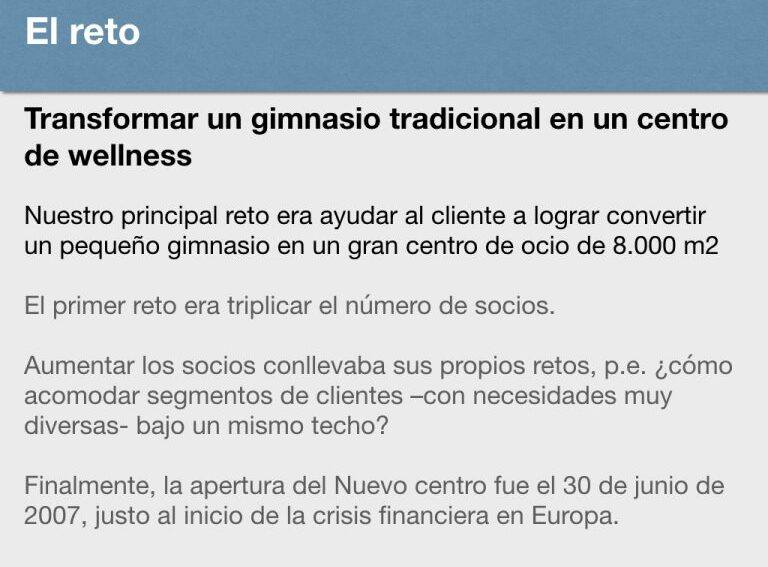ABSTRACT
Controlling the store entails ‘power’. It is the place where the direct contact with the end customer takes place, and where a direct relationship between the company/brand and the customer can be established. Until recently, this had been exclusive territory reserved for “retailers”, but nowadays it is open to all sort of companies.
However, if a firm decides to go into retailing, a nice decoration will not be enough. Instead, the company must develop a new retail business model that integrates and aligns front-end and back-end processes.
____________
Four years ago, during a summer holiday in the Ebro Delta, we decided to paddle down the last stretch of the river in a canoe. As I was paddling along, I caught myself staring at the water just a few centimetres from the canoe. It seemed like it was not moving, as if the canoe was static in the middle of a lake. But when I looked over at the riverbank, I realised that the canoe was actually moving at a surprising speed.
Our day-to-day activities are often so hectic that we focus too much on what is close at our hands and lose our ability to see those changes that, although not so abrupt, are also profound.
A change of perspective
Over the past years, many suppliers started to look at their retail customers from different perspective.
There was a time when stores used to be seen solely as physical spaces where all new products were automatically welcomed – places practically reduced to their logistic functions, with long shelves and a cash register.
With the development of more sophisticated management methods, many stores improved their productivity so greatly, that suppliers began to see them as ‘selling machines’. They even perceived some stores, such as hypermarkets, as ‘sales factories’.
The next time the suppliers looked over to the riverbank, they realised that their customers, the retail firms, had established relationships with the ‘final consumers’ in the stores. Some of them, such as Super Quinn, had really started to take care of the relationship. Moreover, Tesco’s success demonstrated the usefulness of knowing hundreds of customer segments quantitatively, for better decision-making.
Many suppliers started to worry. It seemed that the customers were not, in fact, theirs, but belonged to who pampered them in the stores. So the trade marketing was born.
More recently, suppliers discovered the possibility to use the store as a communication channel with the end customers. Since many purchase decisions were taken in the store, suppliers started to focus on the point-of-sale materials (displays). Many retailers, however, were reluctant to accept displays. ‘Where is my differentiation?’, they asked themselves. ‘I don’t want my store to become a multicoloured bazaar and show the same displays as my competitors do!’
The advent of category management opened up a window of hope for suppliers. Even though it was led by the retail firm, suppliers perceived it as a chance to increase their control of the point of sale, while distributors saw it as a way to improve their shops, corner by corner, free of charge.
Recently some suppliers decided to move into retailing and open up their own stores to achieve a better control of their operations. An example is the supplier Loop who only sells frames from his own brand in the stores. But although owning a direct channel to the market may supposedly allow for greater commercial control, it does not stimulate growth of the main asset of a firm: its brand.
Displaying more posters does not make a better brand. The store is a multi-sensory communication medium with an extraordinay capacity to express emotions. But only those suppliers that understand and take advantage of the multiple roles a store can have will be successful on the long-term. La Vinoteca Torres (Torres’ wineshop) is a good example of a supplier becoming a successful Firm In Retailing.
.
Interior design vs. business model
Good decoration is a first step. But much more could be achieved if the store (or stores) is understood as the visible ‘tip of the iceberg’ of a well-crafted business model that integrates those aspects visible for the audience with the corporate processes: product launches, market research, sales, etc.
Till today, many managers do not understand stores as a place where end customers can communicate with the company. However, if the communication is bidirectional, it allows the development of a much stronger relationship between the company/brand and the customer.
One step beyond is to see the store as a place for imagination, a greenhouse for creativity and new inputs, which can provide stimuli for new solutions and finally boost innovation.
.
Summary
In today’s world, the ‘power’ does not lie with the retailers but with any company that decides to take advantage of the great benefits of being in retailing and dears to create a whole (new) retail business model.
.
Lluis Martinez-Ribes
Source: Distribución Actualidad, the spanish magazine of retail
(nº 398, January 2009)




